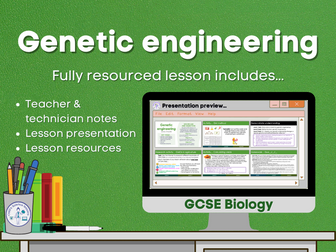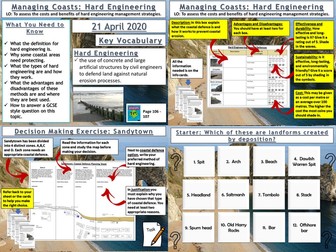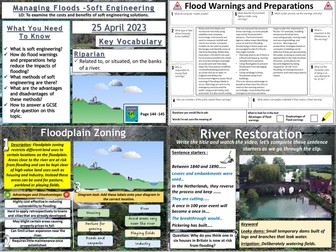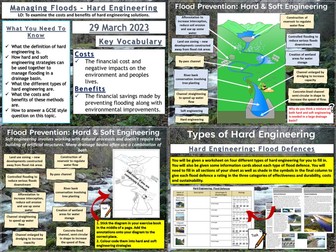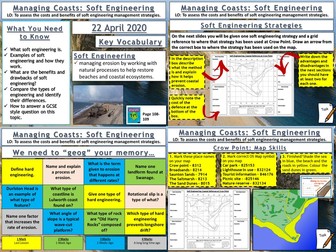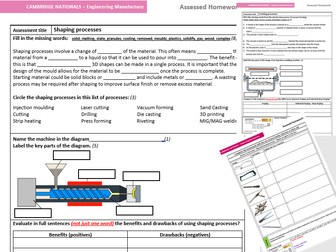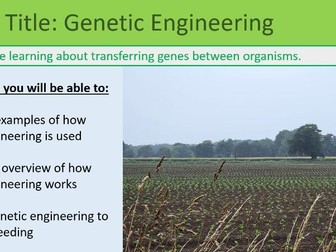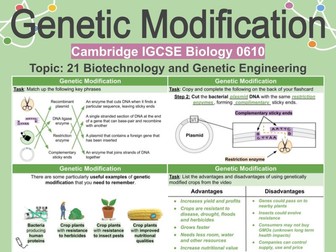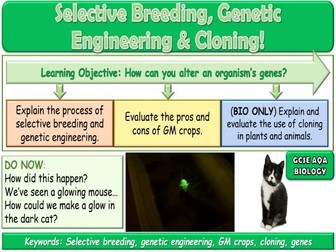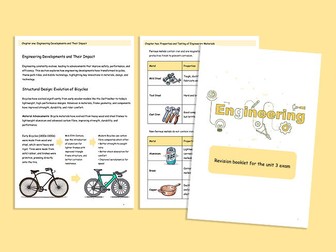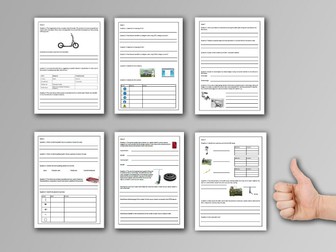Genetic engineering
During this fully resourced lesson on genetic engineering GCSE students work through a variety of tasks to develop their understanding of how organisms can be genetically engineered to obtain a desired characteristic.
This is the 4th lesson in a series of 7 and covers the content of -
-AQA Spec Ref 4.6.2.4 Genetic engineering from B6 Inheritance, variation, and evolution unit.
-AQA GCSE Biology OUP Scheme B14.4 Genetic engineering from B14 Variation and evolution chapter.
Aimed at a mixed ability class covering content 1-8.
-Level 1: Low demand
-Level 2: Standard demand
-Level 3: High demand
Presentation contains (41 slides)-
-Teacher and technician notes
-Bell work activity
-Clear lesson aims, objectives & success criteria.
-Information slides with differentiated content
-Differentiated activities (group work)
-Differentiated questions with answers for self-assessment
-Student worksheets / handouts
This lesson is also available as a digital worksheet, which is ideal for absent students to catch-up missed work, distance learning, home schooling, or independent study.
Genetic engineering Distance learning
If you require more assistance, please contact me at-
cmgeducationresources@gmail.com
